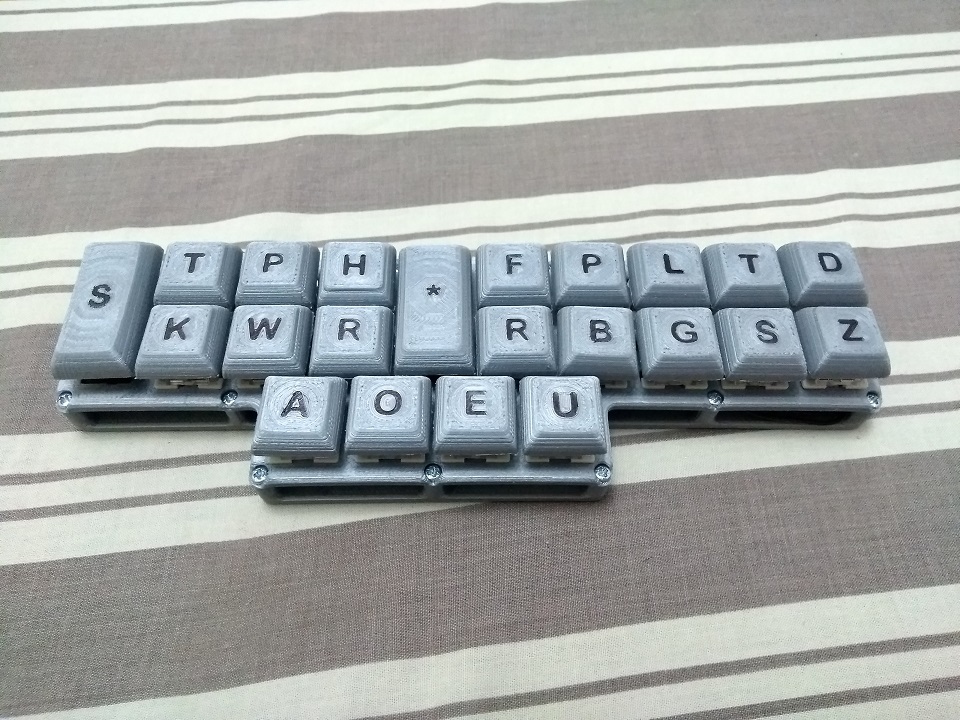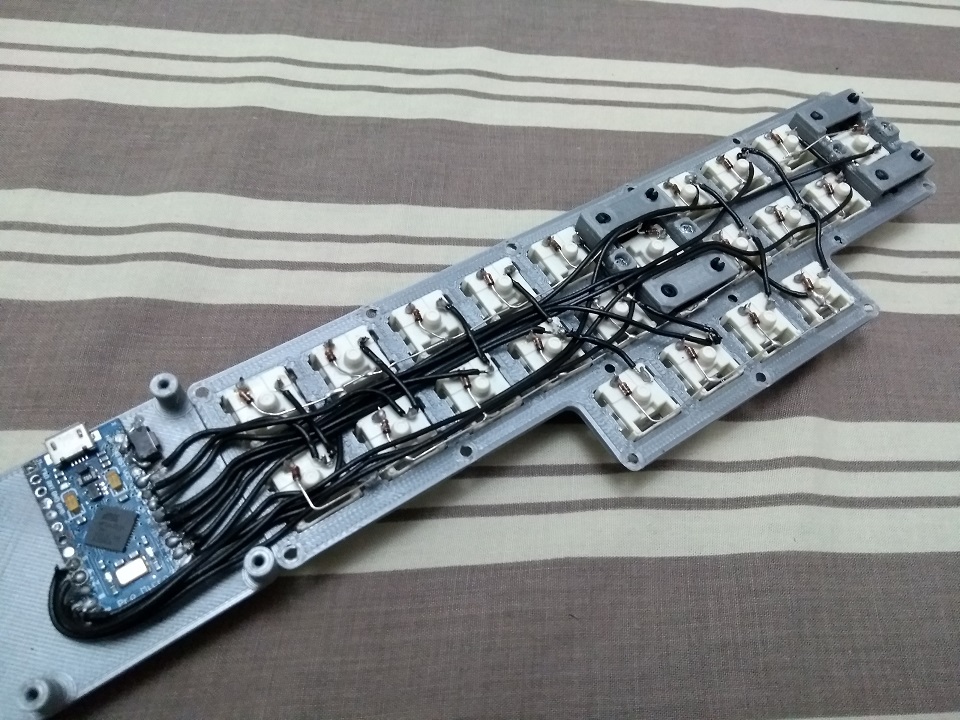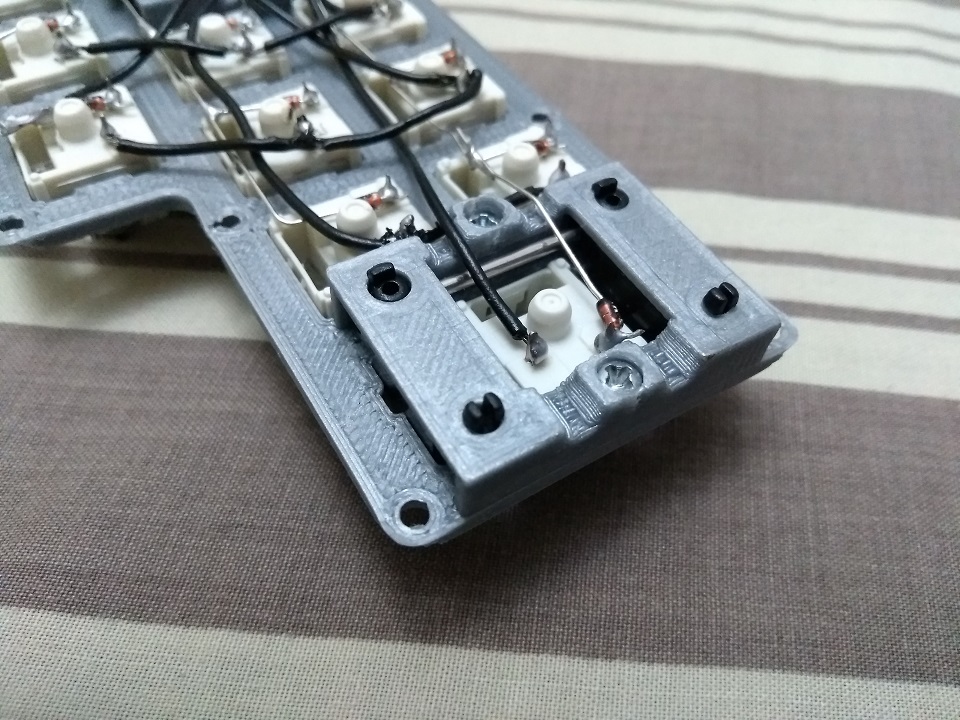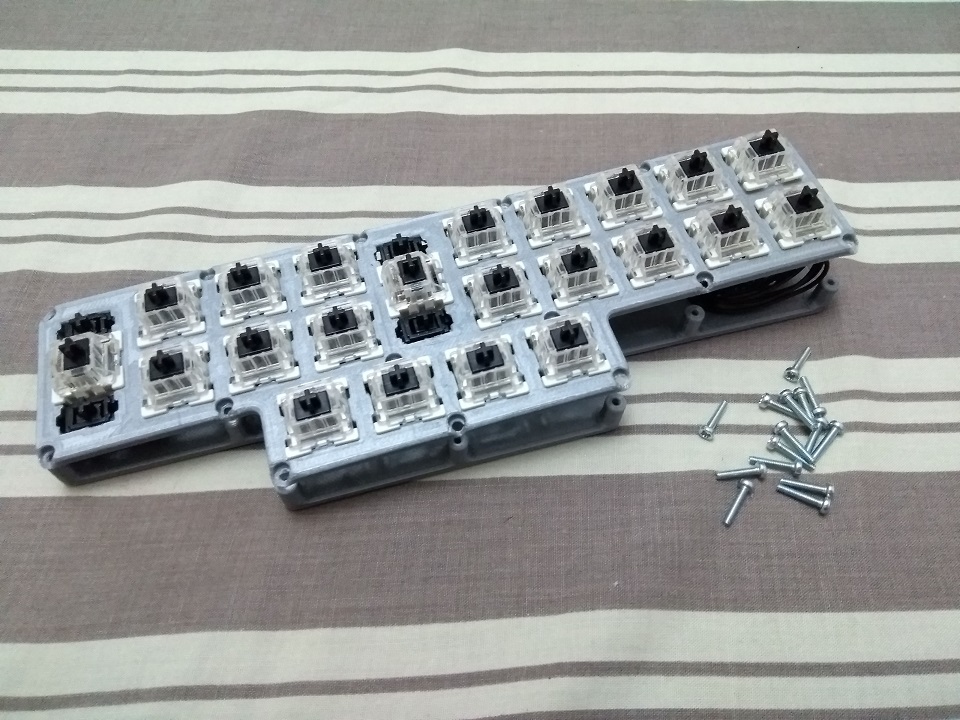Stenography Keyboard
I finally finished my 3D printed, handwired stenography keyboard for use with Plover.
It uses the QMK firmware running on an Arduino Pro Micro clone, and communicates with Plover with the TX Bolt protocol. It uses Gateron black switches, and has custom DSA-style keycaps.
I learned how to route my wires like this from Ben Heck. "Always build something you can take apart," or something like that.
I'd say I did a pretty good job with the wiring.
The top plate and the bottom plate are held together with 15 M2×10 screws. Seems excessive, but whatever. I could've reduced it by simply not making the sides exposed and adding walls, but I like the open sides aesthetic so you can see my wiring.
It took me over 5 minutes just to screw all the screws. An electric screwdriver is probably the next tool I'll be buying.
The custom DSA-style keycaps were based off this repository by Rozakiin (licensed MIT). I modified the models so it's easier for me to 3D print, as well as adding the legends. The black you see is permanent marker. I don't think it will rub off easily because it's 0.6 mm below the top face.
How well does it work? I don't know yet, but this is the first time for me to try linear switches and they feel good to press. It is a bit weird for me to not hear a very tactile click like with blue switches.
Currently, I average around 100 WPM. My goal for this steno keyboard is to double that.





